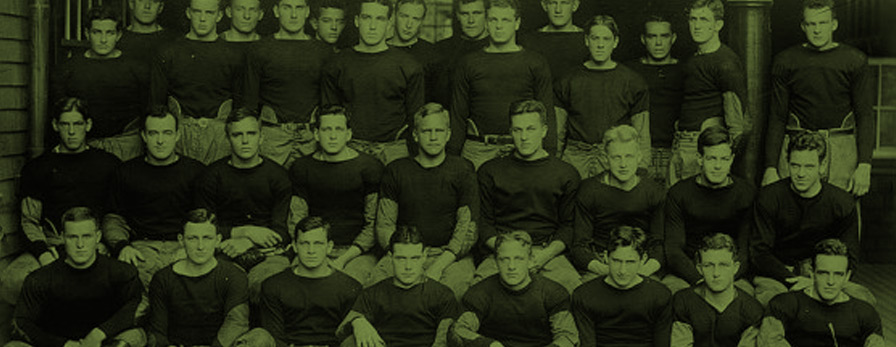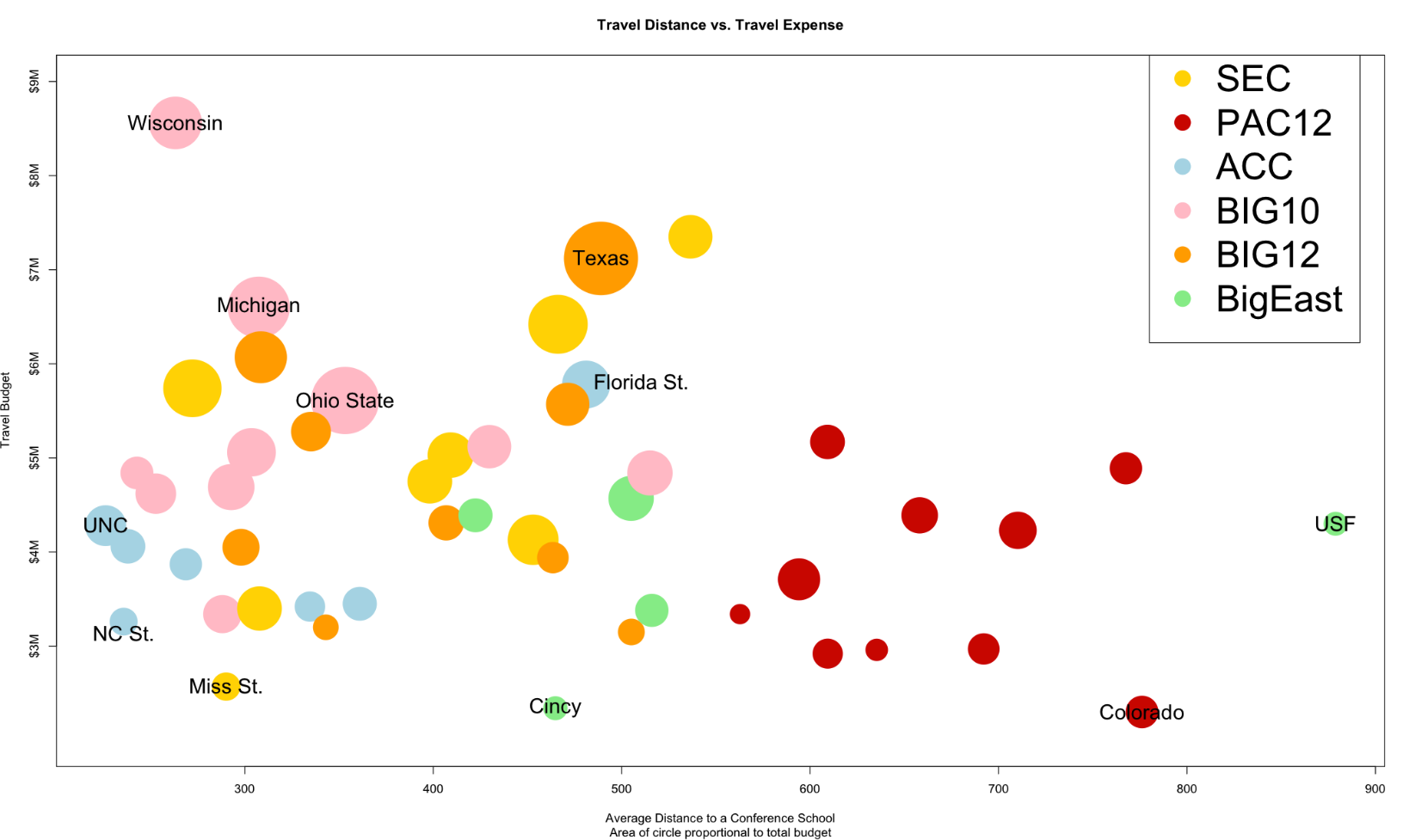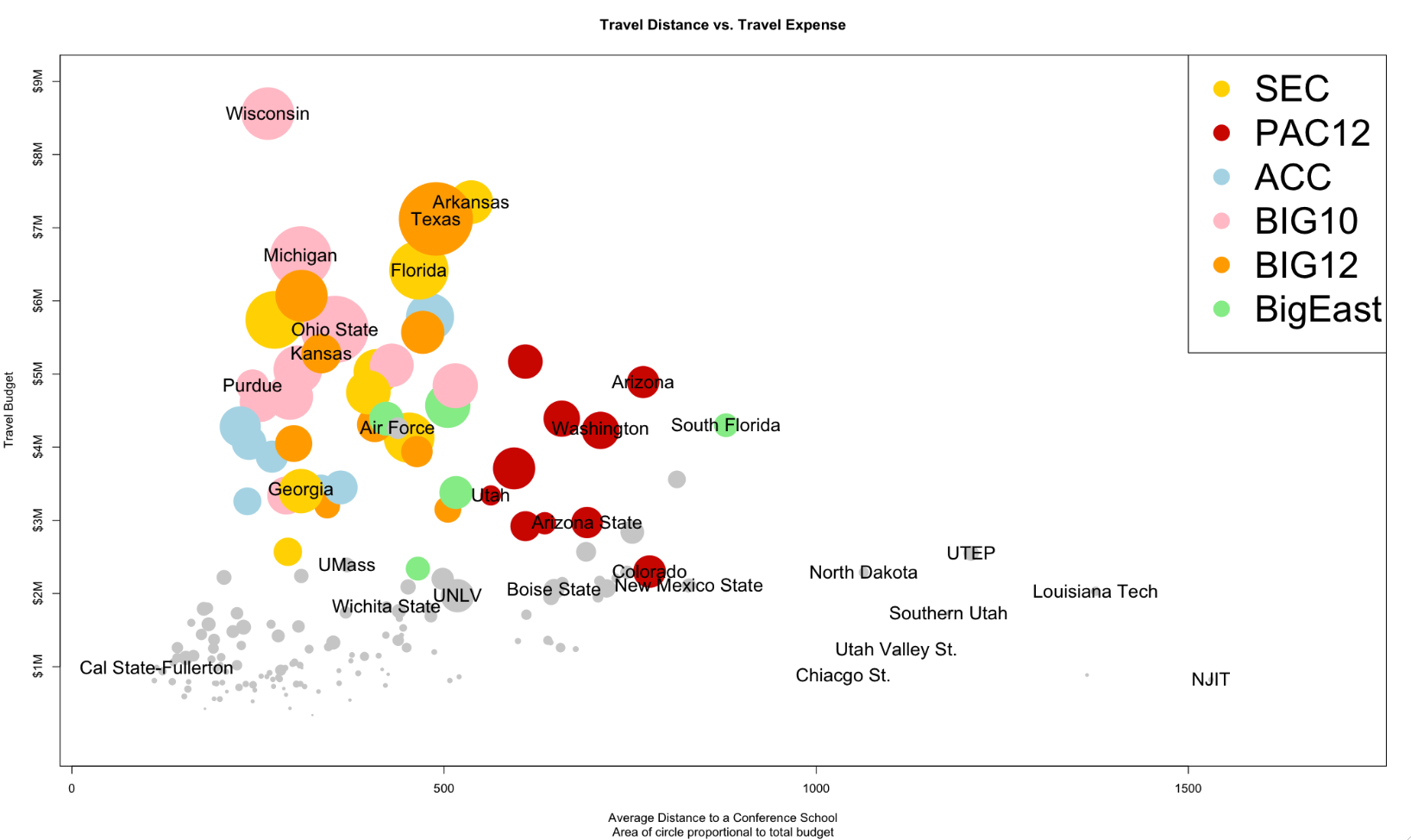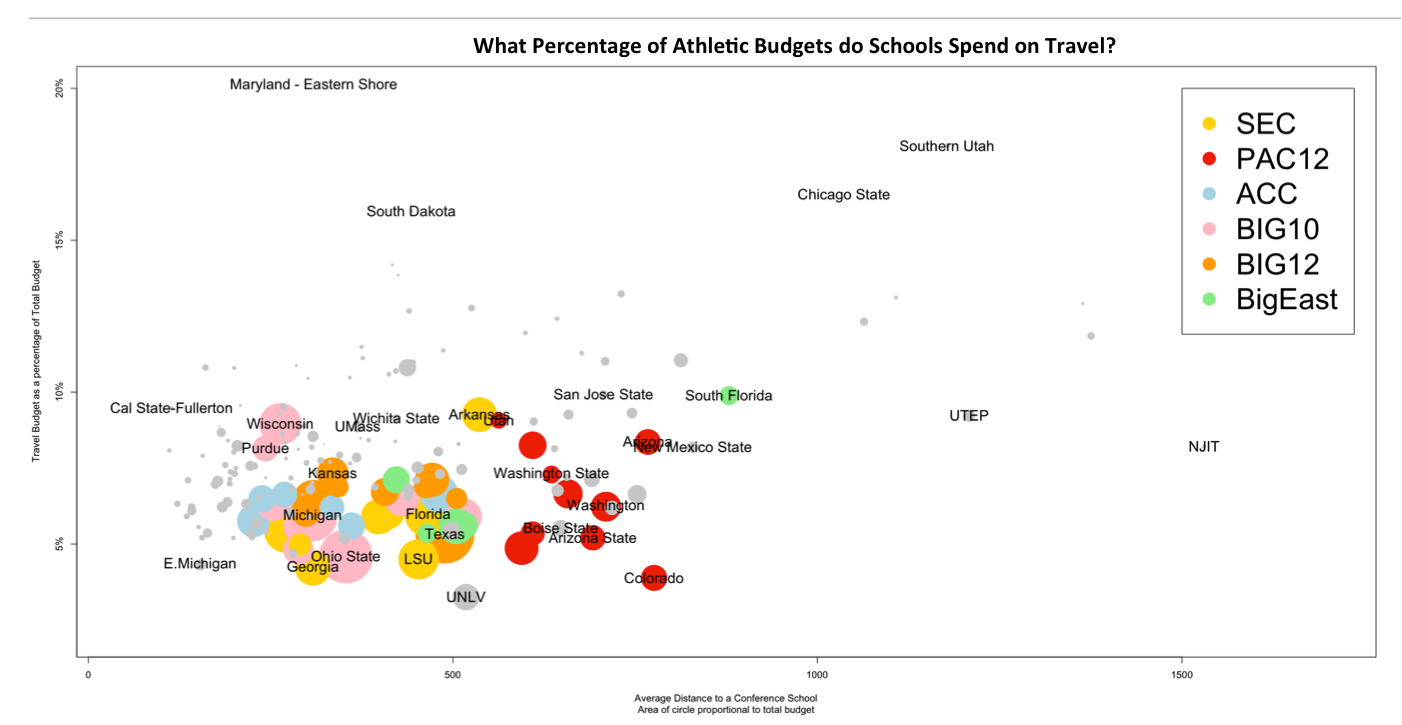By: Greg Matthews
A variety of factors, including travel distance and overall budget, affect travel fund allocation within athletic departments. Intuitively, programs covering more ground might justifiably spend more on travel, and furthermore, schools with larger overall budgets may have more discretionary funds available for travel.
Coupling travel distance data with budgets from the Win AD financials database (not EADA data), we analyzed average distances between conference schools and data on athletic budgets to compare distance versus travel budget for AQ schools for the 2010-2011 season. We present three views 1 of the data in this article.
In View 1 below (click chart to enlarge) , the horizontal axis displays average distance to schools in conference, and the vertical axis displays the total amount of money each school spent on travel. The size of each school’s circle is proportional to the total budget of its athletic program and the circle’s color displays each team’s conference.
Two schools that show up on the edges of the scatter plot in View 1 are Wisconsin and SouthFlorida (USF). Wisconsin, while having a rather low average distance to a conference school, outspends all of the other BCS schools for which we had data available. USF is the opposite. While USF has the largest average distance to conference schools, its travel budget is somewhere in the middle of the rest of the AQ schools.
It’s also interesting to note that while the Pac-12 schools have a large average distance to conference school, most of their budgets are in the bottom half of all AQ schools. Notably, Colorado, with the second largest average travel distance, has one of the smallest travel budgets of all AQ schools.
Now let’s add in the non-BCS school to the visual in View 2, below.
View 2 overlays non AQ schools in graph atop View 1. Reviewing View 2, United States Air Force Academy is a notable exception to the predictable data plot results in that USAF spent over $4 million dollars in travel expense during 2012-2011 season, even with relatively small average distance to a conference school.
If Air Force is the Wisconsin of non AQ schools, then New Jersey Institute of Technology (NJIT) is SouthFlorida. At 1,500 miles, NJIT has the largest average distance to a conference opponent, yet the program spent only about 1,000,000 dollars on travel expenses. Other schools that are traveling long distances to compete on modest travel budgets include, Louisiana Tech, UTEP, Southern Utah, and Utah Valley State, North Dakota, and Chicago State.
In View 3 below, we adapt View 2 (raw travel dollars spent) by re-visualizing the data mapping in terms of percentage of total budget spent on travel.
Among AQ schools in View 3, USF leads the way with about 10% of total budget being spent on travel. Other AQ schools that are spending high percentages of total budget on travel include Wisconsin, Arkansas, Utah, Arizona, and Purdue, which all spend over 8% of their total on getting to the games. Notably, on the other end of the spectrum, Colorado is only spending about 4% of its budget on travel, the lowest among AQ schools for which data were available. The only school spending a smaller percentage of its budget on travel is the University of Nevada-Las Vegas (UNLV) at just over 3%. Put another way, AQ schools in View 3 break down on the following quartiles:
Bottom 25% – average % of budget spent on travel = 4.88 % (n=12 programs)
25%-50% – average % of budget spent on travel = 5.81 % (n=12)
50%- 75% – average % of budget spent on travel = 6.51 % (n=13)
Top 25% – average % of budget spent on travel = 8.14 % (n=12)
As for the non-AQ schools, the University of Maryland – Eastern Shore appears to be spending around 20% of their total budget on travel. Several other schools are spending over 15% of their total budget on travel, including South Dakota, Chicago State, and Southern Utah. NJIT, with its 1,500 miles average distance to a conference rival, still manages to keep travel to well below 10% of total budget. Non AQ schools in View 3 break down on the following quartiles:
Bottom 25% – average % of budget spent on travel = 5.50% (n= 53 programs)
25% -50% – average % of budget spent on travel = 7.41 % (n= 53)
50% – 75% – average % of budget spent on travel = 9.03 % (n= 52)
Top 25% – average % of budget spent on travel = 12.72 % (n= 53)
Though our macro scope does not nearly address the full range of factors considered when planning and implementing travel budgets – the varied results suggest that traveling “coach” vs. “class” is a decision worth tracking, benchmarking, and in some cases, changing.
Winthrop Intelligence gives special thanks to Greg Matthews.
Greg is a post-doctoral research fellow in biostatistics at the University of Massachusetts. He graduated from the University of Connecticut with a Ph.D. in statistics in August 2011 and currently .
See more of Greg’s work at STATS IN THE WILD and follow him on twitter @StatsInTheWild
References:
- We are intentionally labeling these presentations as “views” because they’re simply a look at select macro data that is quite narrow in scope, not a presentation of data designed to prove a point or distinguish good from bad, winners from losers. Our lenses are for individual school perspective, as each program may gain insight and advantages from this outside looking in approach. ↩







